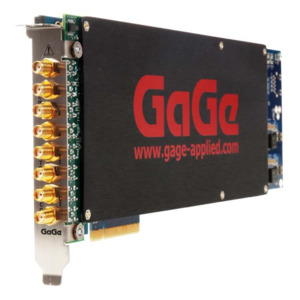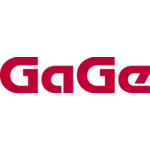
Condition:New
- Description
- Specifications
- Documents
CSE1622 Razor Express CompuScope
Features:
- 4 Digitizing Input Channels
- 16-BitVertical A/D Resolution
- 200 MS/s Maximum Sampling Rate per Channel
- 17 Software Selectable A/D Sampling Rates from 1 kS/s to 200 MS/s
- 125 MHz Analog Input Bandwidth
- 4 GS (8 GB) Onboard Memory Standard, Expandable up to 8 GS (16 GB)
- Dual Port Memory with Sustained PCIe Data Streaming at 1.6 GB/s
- Full-Featured Front-End with AC/DC Coupling and 50 ohms /1M ohm Inputs
- Software Control of Input Voltage Ranges, Coupling and Impedances
- Ease of Integration with External or Reference Clock In & Clock Out
- External Trigger In & Trigger Out with Advanced Triggering Operations
- Synchronized Multi-Card Systems up to 8 Cards for 32 Channels
- Full-Height Full-Length PCI Express (PCIe) Generation 2.0 x8 Card
- Programming-Free Operation with GaGeScope PC Oscilloscope Software
- GaGeScope Software Lite Edition Included
- Software Development Kits Available for C/C#, LabVIEW and MATLAB
- Windows 10/8/7 and Linux Operating Systems Supported
- Standard 2-years parts and labor warranty
Applications:
- RADAR Design and Test
- Signals Intelligence (SIGINT)
- Ultrasonic Non-Destructive Testing
- LIDAR Systems
- Communications
- Spectroscopy
- High-Performance Imaging
- Time of Flight
- Life Sciences
- Particle Physics
Advantages of GaGe digitizers
All GaGe PCIe CompuScope Digitizers support streaming of waveform data from their ADC chips through their dual-port onboard memory directly to PC RAM via their PCIe Gen3 interface at data rates up to 4+ GB/s. This allows for creating high-speed real-time signal analysis and recording systems.
The digitizers feature the largest onboard digitizer sample memory that can be used in many ways to greatly enhance the digitizer system's performance. The size of onboard digitizer sample memory is one of the most important specifications for users interested in real-time data capture, streaming, or triggered event capture.
Additionally, their digitizers are also renowned for sustaining the maximum effective number of bits (ENOB) over a wide signal frequency range with quality signal conditioning and signal fidelity features.
